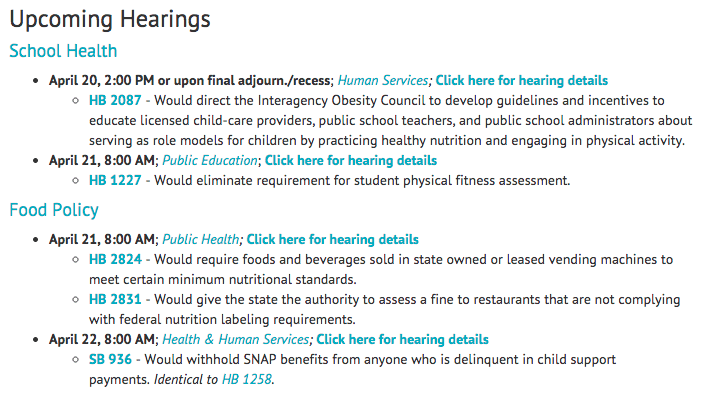The Blog
#TXLege Wants to Hear From YOU About Health:
The Texas legislature meets for just 140 days every other year, which means the pace for the legislative session is quite a bit faster than your typical Texas two-step. But just as there are kind folks to guide you through your first waltz at the Broken Spoke, there are people out there in the policy world who can help you learn the steps of passing legislation at the Texas capitol.
Teachers, administrators, and legislators all know that a healthy child is a better learner. That’s why Texas legislators have led the nation in passing policies aimed at improving the health and fitness of Texas students. Lately though, some of these policies have come under fire, painted as unfunded mandates that place undue strain on schools’ already limited resources, and have been slated for elimination instead of assessed as to whether they work and deserve proper funding from the state.
At the Michael & Susan Dell Center for Healthy Living we created a tool that allows you to learn about and track key bills related to improving the health of kids, families, and communities—let’s call these “healthy living bills.” The tracker provides clear explanations for each of these healthy living bills along with their status, relevant historical context (Was this bill filed last session? What happened?), and links to vetted resources with background info on the bill topic.
This is everything you need to get informed and stay up on the latest action in the pink dome, but what if you want to do something about a bill or issue? The first step is to find your representatives at the Texas capitol (your State Representative and State Senator) and make sure they know your opinion as a constituent. Use the resources on the tracker to arm yourself with background info and then give your reps a call to let them know what you think and ask how they feel about the issue (be sure to tell them you’re a constituent!). You may get to speak with a staff person who handles that specific issue or at a minimum they’ll take down your information and pass your message along to your legislator.
You may not think this makes a big difference, but I can tell you (and this is coming from someone who has worked at the capitol), it does. What makes it even more powerful is to have multiple constituents reaching out their representatives—what better way to do that than through social media? If you go to the MSD Center tracker and click on a bill author’s name, you’ll be taken to that legislator’s directory listing on the Texas Tribune website. This directory is awesome for many, many, reasons, but right now let’s focus on the fact that most of these legislators have social media accounts:
Reach out to them and encourage your friends and followers to do the same. Be sure to include the bill number, and if you’re using Twitter include the hashtag #txlege. Make noise! Be persistent! IT’S TIME for healthy living to be a priority at the Texas capitol!
Speak Up TODAY About HB 1227:
HB 1227 eliminating Fitnessgram is scheduled to be heard this morning.
Written by
Brooks Ballard, MPH
Brooks is the senior communications specialist at the Michel & Susan Dell Center for Healthy Living at The University of Texas School of Public Health and a member of the board of directors for IT’S TIME TEXAS. Brooks worked as a graduate intern during the 81st session (2009) and has followed legislation for the Center ever since. He currently serves as the legislative chair for the Partnership for a Healthy Texas, a coalition of organizations that identifies and supports policies that will have the most impact on the obesity epidemic.




